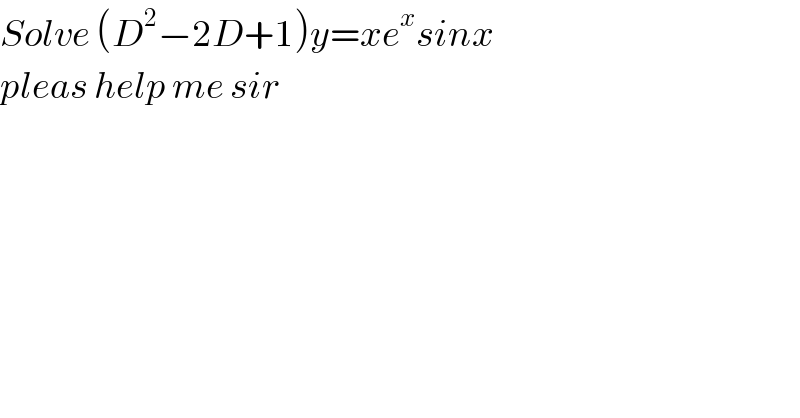
Question and Answers Forum
Question Number 94455 by mhmd last updated on 18/May/20

Commented by mhmd last updated on 19/May/20

Commented by john santu last updated on 19/May/20

Commented by mhmd last updated on 19/May/20

Answered by Mr.D.N. last updated on 19/May/20
![(D^2 −2D+1)= xe^x sin x Auxilairy Eaquation we get, m^2 −2m+1=0, (m−1)^2 =0 m=1,1 Complemenatary Function (CF) = (C_1 +C_2 x)e^x Particular Integral (PI)= ((xe^x sin x)/(D^2 −2D+1)) = e^x (1/((D−1)^2 ))x sinx = e^x (1/((D+1−1)^2 )) x sin x = e^x ((x sin x)/D^2 )= e^x ∫(∫x sin x dx)dx x (−cos x)−∫1.(−cos x)dx −xcos x+sin x −∫x cos x+∫sin x −[ x cos x−∫sin xdx]−cos x −x cos x −cos x−cos x −xcos x−2cos x PI= −e^x (x cos x+ 2cos x) y= CF+PI y= (C_1 +C_2 x)e^x −e^(−x) (x cos x+2cos x).](Q94491.png)
Commented by mhmd last updated on 19/May/20

